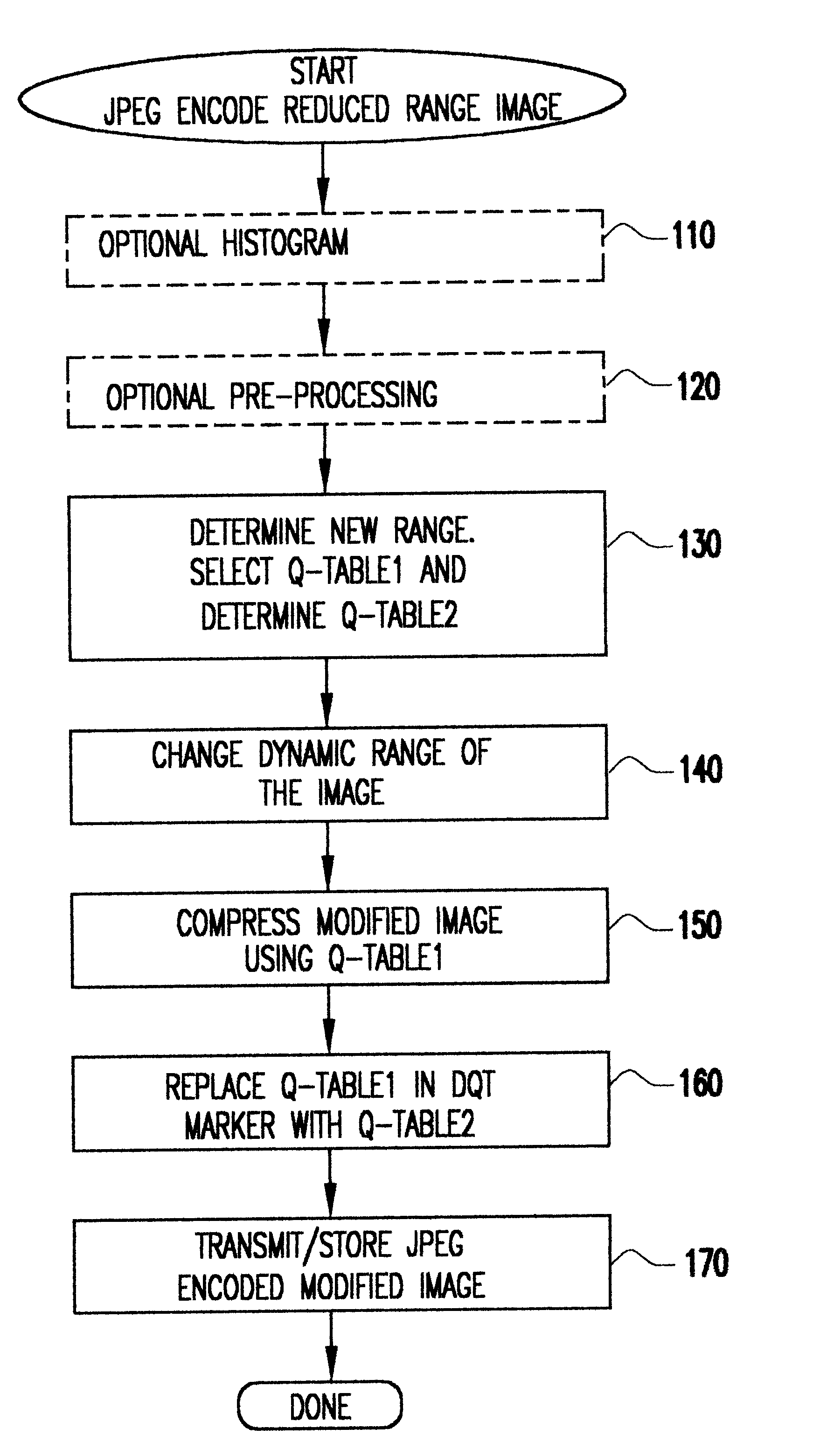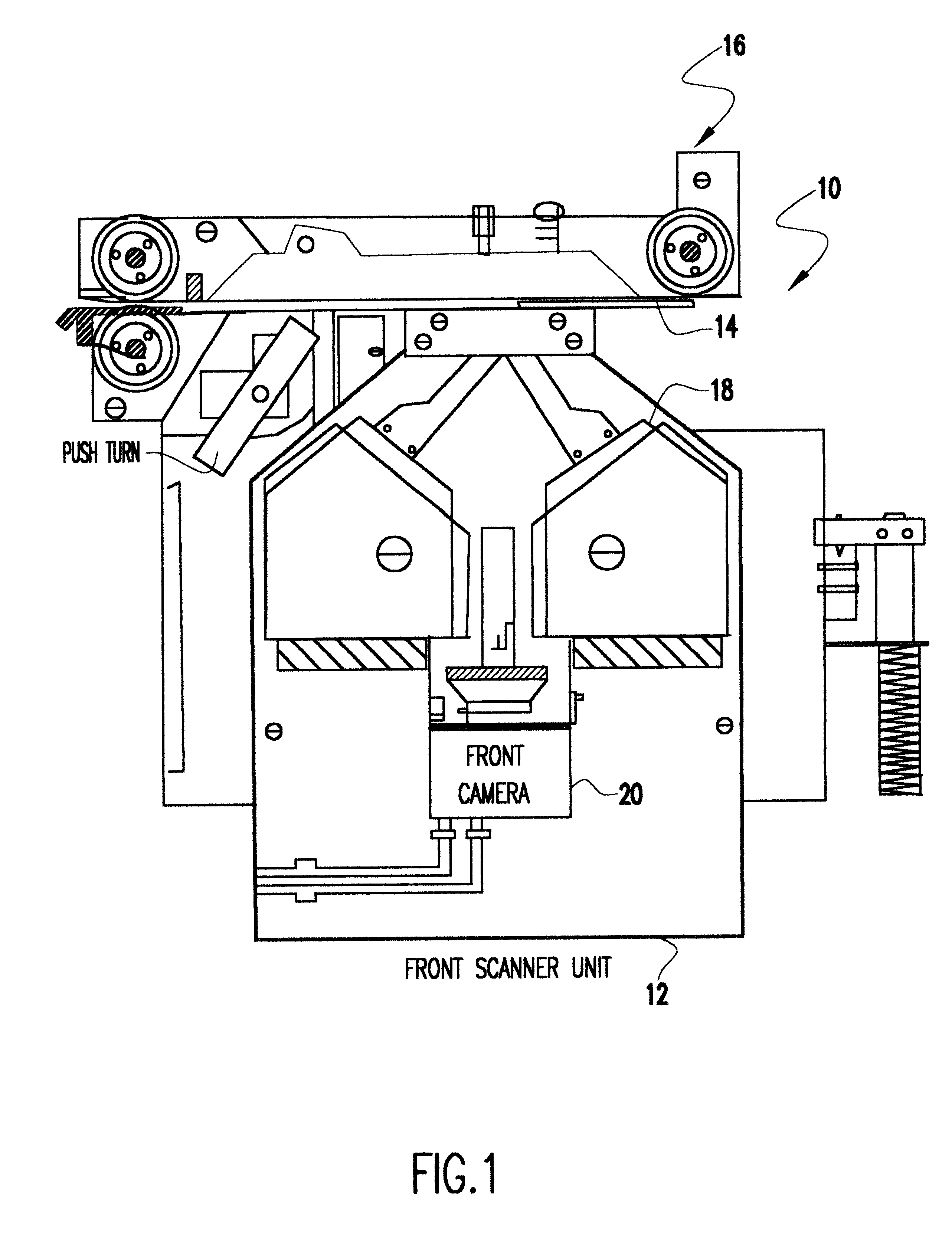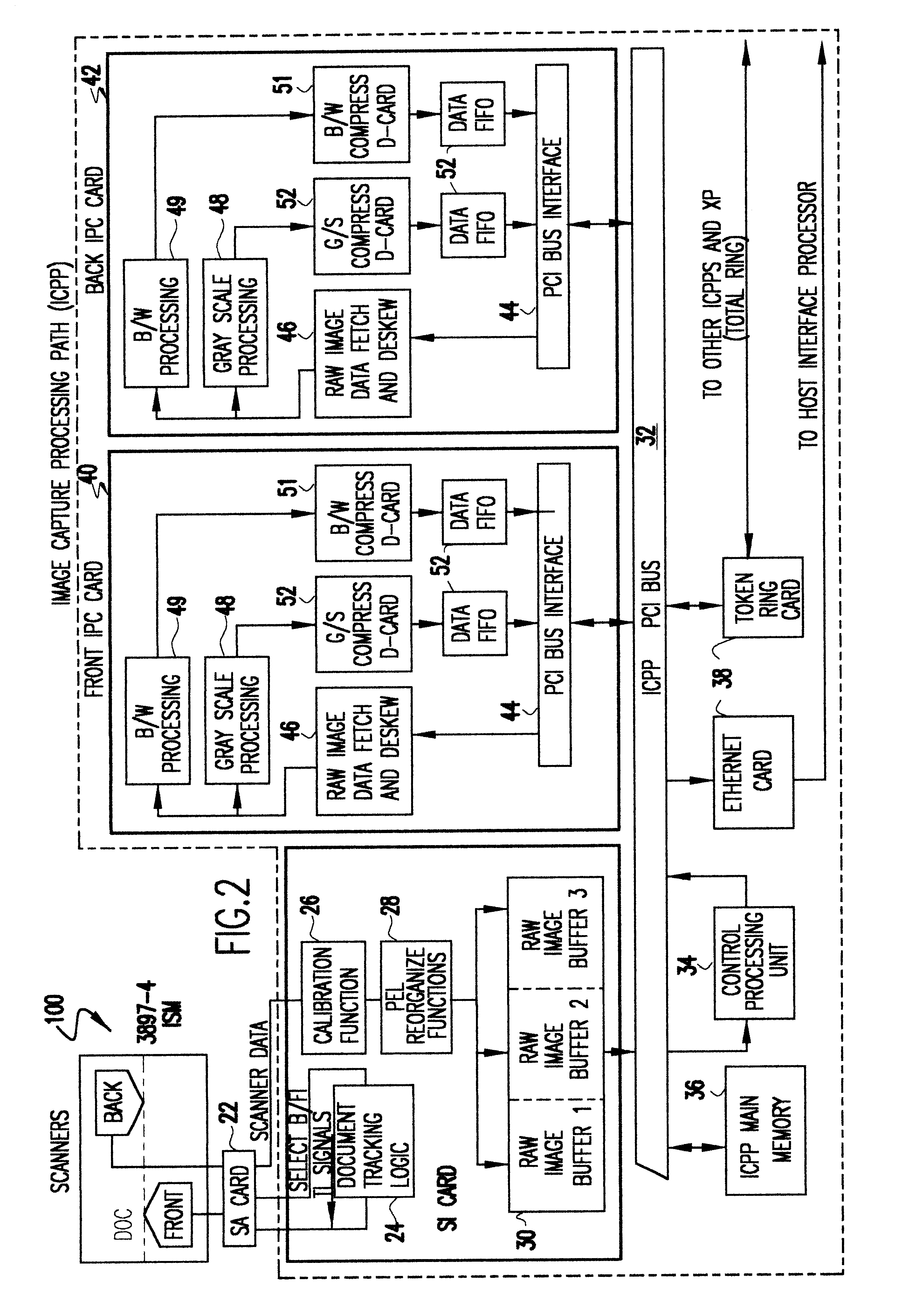Enhanced compression of documents
a document compression and document technology, applied in the field of data compression, can solve the problems of image data compression complexity, inability to solve errors, and inability to meet the requirements of image quality and data storage or transmission time, so as to reduce storage costs
- Summary
- Abstract
- Description
- Claims
- Application Information
AI Technical Summary
Benefits of technology
Problems solved by technology
Method used
Image
Examples
Embodiment Construction
Referring now to the drawings, and more particularly to FIGS. 1 and 2, there is shown a scanner of an exemplary form adapted for image capture of personal checks and a controller and data processing arrangement therefor in accordance with a preferred environment of the invention. While scanners performing similar functions are known in the art and those skilled in the art will readily understand the basic principles thereof, since the arrangements shown in FIGS. 1 and 2 are also illustrative of the operation of the invention as well as the preferred environment thereof, no portion of either Figure is admitted to be prior art in regard to the present invention.
The scanner camera 10 depicted in cross-section in FIG. 1 preferably comprises a housing 12 having a document stage 14 over (or under) which the document is passed by a document handling and transport arrangement 16 of any suitable design. The basic function of housing 12 is to maintain the relative positioning of lighting arra...
PUM
 Login to View More
Login to View More Abstract
Description
Claims
Application Information
 Login to View More
Login to View More - R&D
- Intellectual Property
- Life Sciences
- Materials
- Tech Scout
- Unparalleled Data Quality
- Higher Quality Content
- 60% Fewer Hallucinations
Browse by: Latest US Patents, China's latest patents, Technical Efficacy Thesaurus, Application Domain, Technology Topic, Popular Technical Reports.
© 2025 PatSnap. All rights reserved.Legal|Privacy policy|Modern Slavery Act Transparency Statement|Sitemap|About US| Contact US: help@patsnap.com



